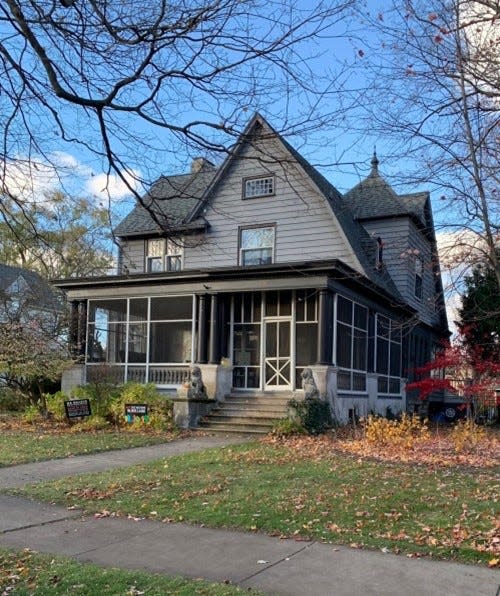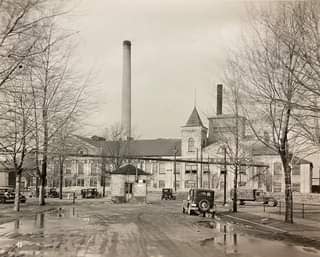Steve VanderVeen: Superintendent, entrepreneur, Holland Sentinel owner Charles McLean was 'in the middle' of everything
Charles McLean was in the middle of it all. He was born in 1856. His father had emigrated from Scotland, his mother from Canada.
Charles and Ida Sears McLean and their first son, Sears, came to Holland from Newaygo in 1892, when the Holland School Board hired Charles as superintendent. The McLeans lived at 274 Maple Ave.
More History: George Hummer and the creation of West Michigan Furniture
More History: Arend Visscher and James Huntley lived on a hill
More History: Holland's first mayor excelled at management
Under former superintendent George Hummer, the school system had built a high school between 10th Street and 11th Street, just west of Central Avenue. Like Hummer, McLean was also a doer. Not only did he expand the physical capacity of the schools, but he also added a kindergarten to its offering.

At the same time, McLean tried to rally support for his school against the Christian school movement, arguing, in his 1893 Annual Report, that public schools provided a place where all could “meet and mingle” to form the cultural “homogeneity so indispensable to the welfare of the Republic.”
In pursuit of that goal, he also provided summer school for Dutch emigrant children. But the Christian Reformed Churches founded Holland Christian School in 1901 anyway, a desire many of Holland’s early families brought with them from The Netherlands.
By that time, McLean, along with George Hummer and Arend Visscher of People’s State Bank, Isaac Cappon and John C. Post of First State Bank, Albert LaHuis and Christian Den Herder of Zeeland State Bank, Cornelius De Roo and Heber Walsh — among others — founded the Holland Sugar Company, located between 14th Street and 15th Street west of Harrison Avenue.
There, McLean served as general manager. Reflecting his stature, he and Ida bought George and Maggie Hummer’s house at 191 W. 12th St. Sears, then also working at Holland Sugar, stayed at the Maple Avenue address.

In 1907, Charles McLean joined John Kolla, August Landwehr, Arend Visscher, Henry Kremers, Jacob Van Putten and others on the board of the Holland Furnace Company, and was board secretary.
Around the same time, Ida Sears McLean organized the founding of the Elizabeth Schuyler Hamilton (Holland) Chapter of the National Society of the Daughters of the American Revolution.
Then, Charles McLean and Cornelius VerSchure invested in the Thompson Manufacturing Company, a maker of bungalow furniture and wooden water closets, and McLean become president. In 1914, they moved the factory from Fourth Street and River Avenue to 167 E. 12th St. — a building now occupied by Hope College’s DePree Art Center.
In 1914, Ida passed away. In 1917, Charles married Laura Estelle Browning. That year, he also served as president of the Holland Hospital Association, which raised funds to build the hospital on Michigan Street.
In the 1920s, Charles McLean joined the board of the DePree Laboratories. In 1921, he joined the board of Hope College. In 1922, he was one of the owners of The Holland Sentinel.

That year his son, Edwin, married Edith Cappon, daughter of Isaac and Jacoba De Kok Cappon, another very influential family. In the early 1920s, McLean, along with Hub Boone, Con DePree, Dirk Van Raalte, John Kolla — and others — served on the governing board of the Warm Friend Tavern, which became home to the Holland Furnace Company's national sales conventions.
Meanwhile, Sears — now Holland Sugar Company’s superintendent — traveled to San Antonio, Texas to recruit migrant laborers. As a result of that effort, three train carloads of migrants — approximately 100 workers — arrived in Holland to weed and harvest sugar beets.
But their presence must have worried the locals, for McLean assured them in the Holland City News after the growing season that “the Mexicans were collected in Holland and sent back to their winter homes.”
Subscribe: Learn more about our latest subscription offers!
Then, the following summer, when the locals again “wondered what they were doing here,” McLean said, “Mexican laborers [were] more desirable than the north European laborers we have always thought necessary for the beet industry.” In addition, he said, they were “good-natured” and willing to “do work that most other types of workers refuse.”
In 1930, Charles McLean became president of the board of Hope College. Upon the completion of what the college later named Dimnent Chapel, Charles and his sons donated the tower chimes in the name of Ida Sears McLean.
Charles McLean died in 1931.
Information for this article comes from Robert Swierenga’s "Holland, Michigan," the city's Historic District Intensive Research, and eshamilton.michdar.net.
— Steve VanderVeen writes about local business history. For a limited time, see his upcoming books at kickstarter.com/projects/holland-me/holland-and-me-the-series.
This article originally appeared on The Holland Sentinel: Steve VanderVeen: The tale of Holland Sentinel owner Charles McLean
